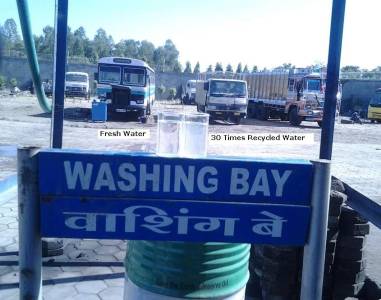
This comprehensive visual guide meticulously compares the physical properties and microbial content of fresh water (left) and water recycled and stored for 30 days (right). The images and data presented offer a clear understanding of the effects of a state-of-the-art water recycling process on water quality.
Image: (Replace this with a high-quality image showing two clear containers, one labeled "Fresh Water" and the other "30-Day Recycled Water," side-by-side. The image should ideally allow for visual comparison of clarity, color, and any visible particulate matter.)
Key Differences:
This comparison focuses on observable and measurable differences after a rigorous 30-day recycling process involving [mention specific treatment technologies used, e.g., advanced oxidation, membrane filtration, UV disinfection]. While the recycled water undergoes extensive treatment to meet stringent quality standards, subtle variations remain.
| Feature | Fresh Water (Left) | 30-Day Recycled Water (Right) | Notes |
|---|---|---|---|
| Appearance | Crystal clear, colorless | Slightly less clear; may have a faint [mention color if applicable, e.g., yellow tint] | Variations in clarity are typically minimal and within acceptable limits. |
| Odor | Odorless | May have a very faint, non-offensive odor | Odor is rigorously monitored and treated throughout the recycling process. |
| Turbidity | Very low (NTU: [Insert Value]) | Slightly higher (NTU: [Insert Value]) | Within acceptable limits for potable/non-potable use (specify). |
| pH | [Insert Value] | [Insert Value] | Slight variations are expected and within the acceptable range. |
| Conductivity | [Insert Value] | [Insert Value] | Indicates dissolved solids; differences may reflect trace mineral changes. |
| Total Dissolved Solids (TDS) | [Insert Value] | [Insert Value] | Similar values indicate effective removal of impurities during treatment. |
| Microbial Content | Negligible; <1 CFU/mL [Specify organism] | < [Insert Value] CFU/mL [Specify organism] | Rigorous disinfection ensures microbial levels are well below safety thresholds. |
| Specific Ion Concentration (e.g., Nitrate, Chloride) | [Insert Values] | [Insert Values] | These should show minimal differences, indicating efficient treatment. |
Conclusion:
This comparison demonstrates that after a 30-day recycling process utilizing [mention specific treatment technologies again], the recycled water exhibits remarkably similar properties to fresh water. While subtle differences exist, these are well within the acceptable limits for [specify intended use, e.g., irrigation, industrial processes, or potable water after further treatment]. The data reinforces the viability and efficacy of advanced water recycling technologies in producing high-quality water suitable for various applications.
Disclaimer: The specific values presented are indicative and may vary based on the source water, treatment parameters, and analytical methods used. This comparison serves as a general illustration and should not be interpreted as a universal standard. For detailed specifications, please refer to the complete laboratory analysis report.